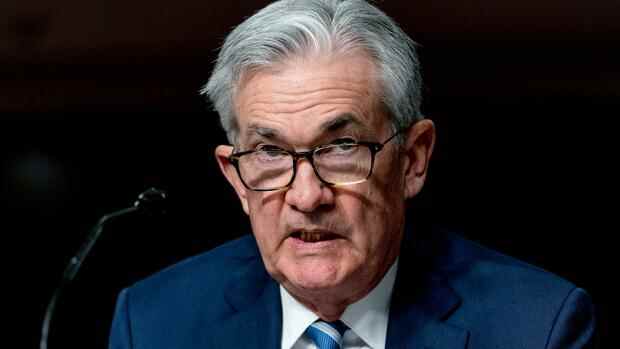The markets stare at the Fed chief.
(Photo: AP)
The US Federal Reserve (Fed) tightened the reins significantly on Wednesday. In Germany, where savers suffer from negative interest rates and consumers from rising prices, it makes sense to see this turnaround as a model for the European Central Bank (ECB). But the Fed would not be a good role model for the ECB.
There are three reasons for this, which are closely related.
- First, the Fed has already allowed much more inflation than the ECB. For that reason alone, she wouldn’t be a good role model. The rate of price increases has recently reached almost seven percent in the United States.
- But the second reason is even more important: the US government has fueled the economy at the same time as large, debt-financed spending programs. The danger that monetary and financial policy could fire at the same time was recognized early on and has received a lot of criticism from Fed Chairman Jerome Powell. In comparison, financial politicians in Europe were much more cautious.
- The third reason is perhaps the most important: the wage-price spiral is already running in the USA, in which both factors reinforce each other. In contrast, not yet in the euro area. In Germany, for example, collectively agreed wages rose less than in previous years.
If you take all three reasons together, it becomes clear that the ECB has to go its own way – which it does. What connects the ECB and the Fed, however, is the high level of uncertainty in their forecasts and thus in their decisions.
Top jobs of the day
Find the best jobs now and
be notified by email.
The models work badly
Monetary policy is no longer primarily based on noble principles or intuition, even if both still play a role. The basis are economic models. Even in normal times, the forecasts that such models produce are more uncertain than the weather forecast; Incidentally, because meteorologists have made great strides in the last few decades.
These models are certainly not prepared for a pandemic on the scale that last occurred around 100 years ago with the Spanish flu. They can only function well if the framework conditions are reasonably stable; lockdowns and their consequences cannot therefore be easily assessed.
It is easy to criticize monetary politicians. Your models are often wrong. And yet it would be foolish to forego them and make decisions based on gut instinct. Nobody knows if the Fed would have done better if it had pulled the reins sooner. Maybe yes. Perhaps it would then have stalled the still ailing economy without being able to curb inflation, which is primarily the result of the scarce supply. The result would be the dreaded stagflation from inflation plus a stagnating economy.
Powell probably still knows what he’s doing better than many of his critics. The danger of reacting too strongly is still there – if the corona variant Omikron causes more harm than previously foreseeable.
There is little else left on both sides of the Atlantic than to drive on sight. The chances of keeping the economic consequences of the pandemic under control are still not that bad. It could have been a lot worse now than we’ve seen so far.
More: Will inflation stay high? These eight graphics show the arguments for and against.
